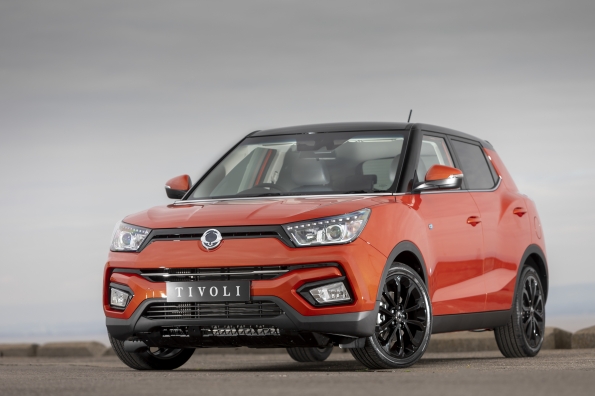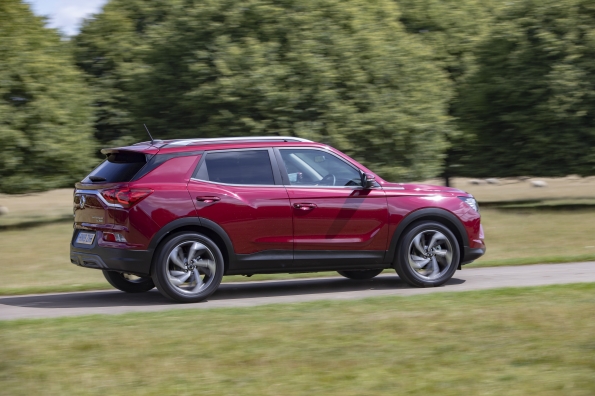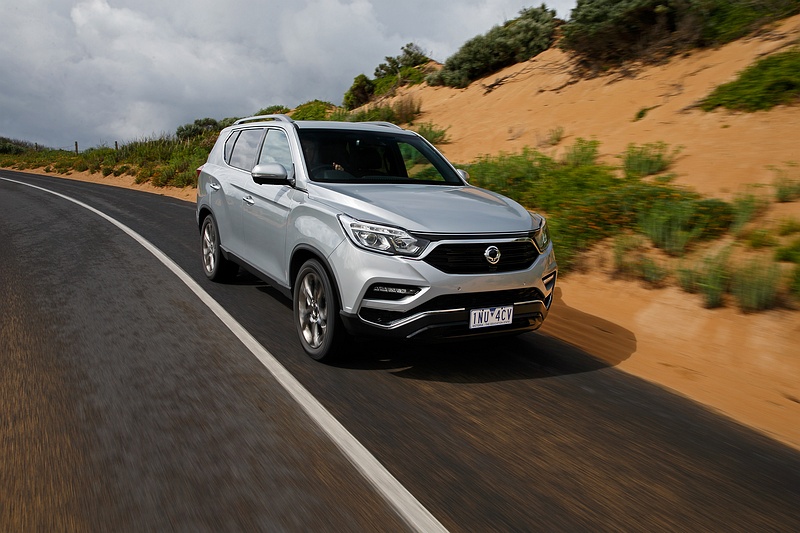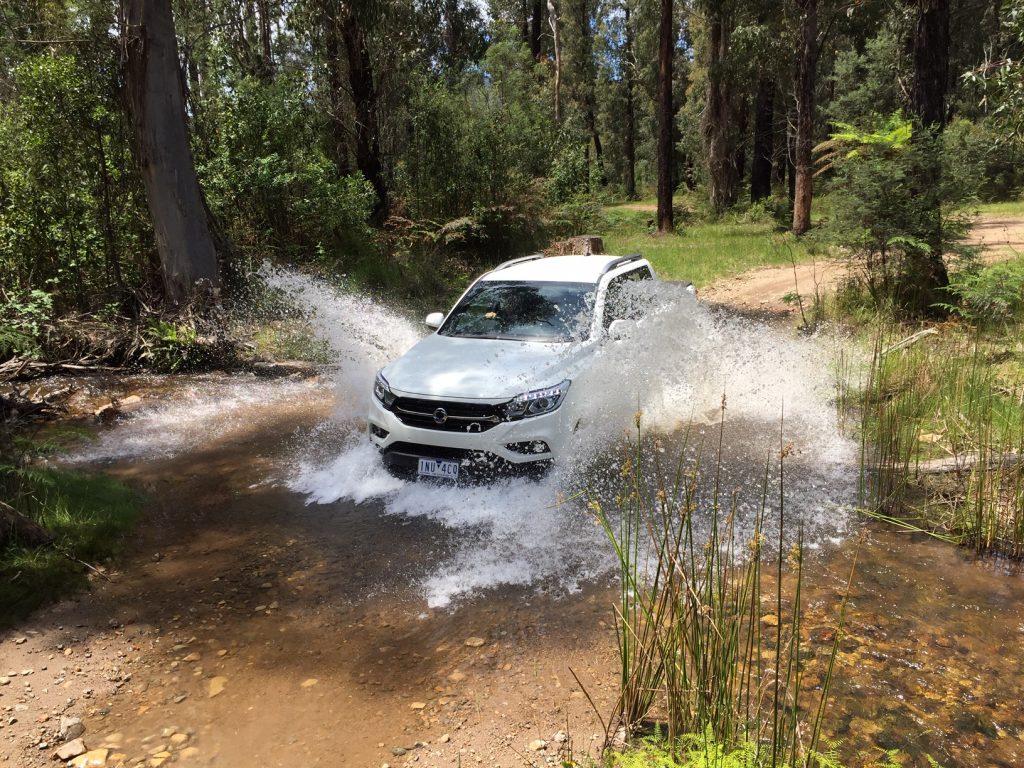After two years in the Australian motoring wilderness, Korean brand SsangYong has returned to the fray with a vengeance. Buyers looking for quality and value for money should pay close attention.
There are four new models all blessed with super-sharp drive-away pricing (with no buyer exceptions), stacks of standard features, seven-year unlimited-kilometre warranties, seven-year roadside assist and a seven-year service-pricing deal.


Service intervals are 12 months or 20,000kms.
All the new models – even the entry-level variants — come loaded with generous standard-kit inventories and the overwhelming initial impression you have as soon as you start the cars – especially the diesels – and head down the road is their excellent refinement and cabin quietness.
All have Apple CarPlay and Android Auto and come pretty well loaded with safety features and all their interiors have classy design and a nice blend of hard and soft plastics.
The seats too are well shaped with plenty of hip-and-thigh bolstering and all models have good-sized bottle-friendly door pockets and other cubby holes for bits and pieces.
Importantly, every new all-wheel-drive SsangYong has a full-size spare. Competitor companies take note.
One element I don’t like is that the wiper and indicator/light controls are on the wrong side, just like those Europeans have them. It’s a minor inconvenience unless you’re a two (or more car) family and one (or more) of them has the controls on the other side – then you find yourself too often wiping when you want to indicate, and indicating when you want to wipe. (Why can’t the ADRs standardise this for Australia? – Editor)
Not only does the four-model line-up confirm how seriously SsangYong is about having a genuine crack at the Australian market, the local operation is now a fully owned factory subsidiary and this country is the only such operation world-wide outside Korea.
Currently there are just 32 SsangYong dealers in Australia but local boss Tim Smith is shooting for 40-plus by the end of next year,
He says he is already receiving lots of enquiries from other dealers, including those with Toyota and Holden franchises.
Over the years, SsangYong styling has not exactly been eye candy (who could forget the Stavic?) but the company’s own styling studio now works with legendary Italian design studio Pininfarina and the new 2019 line-up confirms what a great move this has been.
Opening the batting for the brand’s Australian comeback is a small SUV, currently a hot-selling and hotly contested category.
Dubbed the Tivoli, it comes in two sizes and is aimed squarely at the long-running but still hugely popular Mitsubishi ASX and the other main segment contenders such as the Honda HR-V, Mazda’s CX-3 and the quirky-looking Toyota CH-R.
The smaller Tivoli comes in three guises – EX, ELX and Ultimate – and the entry-level variant is the manual EX petrol with a price tag of $23,490.
The dearest is the two-tone automatic diesel at $34,490.

The larger and automatic-only Tivoli XLV ELX comes in at $31,990 and the range-topping XLV Ultimate two-tone tips the scales at $35,490.
The XLV is 238mm longer than its shorter sibling and this added length gives the car a class-leading 720 litres of cargo space.
Buyers have the choice of either a 1.6 litre, 94kW/160Nm petrol engine or a 1.6-litre, 84kW/300Nm turbo-diesel in either two- or four-wheel-drive.
The longer Tivoli XLV also runs the 1.6-litre diesel mated with a six-speed Aisin automatic transmission.
During our launch drive program we saw the AWD diesel return 7.1 L/100km compared with the claimed figure of 5.9 L/100km.
There will be a major model change for the Tivoli in the second quarter of next year and SsangYong will also launch an all-new mid-size SUV in the third quarter of next year.


Next up the pecking order is the Rexton, a large seven-seat SUV that is available in three guises – the petrol-powered $39,990 EX FWD automatic, the $46,990 ELX AWD diesel and the top-spec AWD Ultimate diesel at $52,990.
The petrol engine is good for 165kW and 350Nm and it uses a six-speed Aisin automatic. The 2.2-litre turbo-diesel engine with its Mercedes-Benz-sourced seven-speed automatic churns out 133kW and 420Nm.
With a towing capacity of 3.5 tonnes, the new Rexton should be an attractive proposition for over-50s who want to hitch up a caravan and hit the road on the great around-Australia odyssey. It should (like the earlier Rexton) also appeal to the horsey set with their floats and four-hoofed animals.

The top-spec Ultimate diesel’s interior is beautifully designed, equipped and finished. In terms of classiness it’s right up there with things like the top-spec Mazda CX-9, and that’s high praise.

Final new model in the range is the new Musso dual-cab ute with its 2.2-litre turbo-diesel engine, good for 133kW at 4000rpm and 400Nm on tap between 1400 and 2800rpm. Transmission is via a six-speed Aisin automatic or a six-speed manual gearbox.

SsangYong claims a combined-fuel-consumption figure of 10.9 L/100km and while my co-driver and I saw 11.7 L/100km, that included some enthusiastic highway and country-roads punting and a couple of laps on a pretty serious and fun-to-drive off-road track, neither of which is designed to generate headline-setting fuel consumption figures.

At 100km/h on the open road, the Musso loafs along with the engine spinning extremely quietly (and that also means economically) at just 1500rpm.
The Musso in launch guise is 5280mm long, rides on a 3000mm wheelbase and runs rear coil springs. The cargo tub is 1520mm and while this is shorter than the likes of the Ford Ranger and the Mitsubishi Triton, there is more cabin room – especially legroom in the back seat, something notably lacking in some crew cab utes.

The other good thing about the Musso’s rear seat is that you don’t have to sit up straight like a naughty school boy as you do in some of its competitors.
It you want a longer cargo space, a new 300mm longer Musso will arrive in the second quarter of next year and it will ride on leaf springs at the rear.
Musso pricing kicks off at $30,490 for the manual EX, rises to $35,990 for the mid-spec ELX automatic and tops out at a highly competitive $39,990 for the automatic Ultimate.
Unlike most of the competition, the Musso’s multi-function steering wheel has height-and-reach adjustment and with four-wheel disc brakes, only the Ford Raptor and the new Benz X-class can say “so do I.”
With its rear coil springs the ride is comfortable and even when pushed hard in tight corners neither my co-driver nor I thought body roll was a problem.

Following in the wheel-tracks of Kia and more recently Hyundai, SsangYong boss Tim Smith and his management team plan to implement an Australian suspension-tuning program within the next three months to make sure that their cars’ underpinnings are the best they can be for local conditions.
In summary, it looks like SsangYong has got it right this time.
There are great new models and variants, pin-sharp pricing and specification levels that will frighten the competition and it’s all topped off by outstanding customer-benefit policy that delivers the seven-year warranty, seven-year roadside-assist and the seven-year fixed-price servicing deal.
Taking all of that into account, the new offerings from the smallest of the three Korean companies really do deserve to be on the shopping lists of new-car buyers in their respective segments.
There are some 18,000 SsangYongs currently in Australian garages but by the end of 2019, this number is sure to have grown significantly.
SsangYong Tivoli
Pricing: $23,490-$34,490 (driveaway)
Warranty: seven-years, unlimited km
Roadside assist: seven years
Service intervals: 12 months or 20,000km
Safety: four-star Euro NCAP
Engine: 1597cc four-cylinder petrol, 1597cc four-cylinder diesel
Power: 94kW @ 6000rpm (petrol), 85kW @ 3400-4000rpm(diesel)
Torque: 160Nm @ 4600rpm (petrol), 300Nm @1500-2500rpm (diesel)
Transmission: Six-speed manual, six-speed automatic(petrol, 2WD), six-speed automatic (diesel 2WD, 4WD)
Drive: 2WD (petrol), 2WD, 4WD (diesel)
Body: 4202mm (long); 1798mm (wide); 1590 mm(high)
Turning circle: not stated
Weight: 1270-1480kg
Towing: Petrol: 1000kg (braked), 500kg (unbraked); Diesel: 1500kg (braked), 500kg (unbraked)
Spare: full size
Fuel Tank: not stated
Thirst: Petrol: 6.6-7.2 L/100km (combined, 91RON unleaded); Diesel: 5.5-5.9 L/100km
SsangYong Tivoli XLV (where different from Tivoli)
Pricing: $31,990-$35,490 (driveaway)
Body: 4440mm (long); 1795mm (wide); 1605 mm (high)
Weight: 1490-1600kg
Thirst: 5.9-6.3 L/100km
SsangYong Rexton
Pricing: $39,990 (EX 2WD petrol, driveaway), $46,990 (ELX AWD diesel, driveaway), $52,990 (Ultimate AWD diesel, driveaway)
Warranty: seven-years, unlimited km
Roadside assist: seven years
Service intervals: 12 months or 20,000km
Safety: TBA
Engine: 1998cc turbocharged four-cylinder petrol, 2157cc turbocharged four-cylinder diesel
Power: 165kW (petrol), 133kW (diesel) – rpm not stated
Torque: 350Nm (petrol), 420Nm (diesel) – rpm not stated
Transmission: Six-speed automatic (petrol), seven-speed automatic (diesel)
Drive: 2WD (petrol), selectable 4WD (diesel)
Body: 4850mm (long); 1960mm (wide); 1800 mm (high)
Turning circle: not stated
Weight: 2095-2233kg
Towing: maximum 3500kg (braked)
Spare: full size
Fuel Tank: 70 litres
Thirst: Petrol: 10.4 L/100km (combined, 91 RON unleaded); Diesel: 8.3 L/100km
SsangYong Musso
Pricing: $30,490 (EX manual, driveaway), $35,990(EXL automatic, driveaway), $39,990 (Ultimate automatic, driveaway)
Warranty: seven-years, unlimited km
Roadside assist: seven years
Service intervals: 12 months or 20,000km
Safety: TBA
Engine: 2157cc turbocharged four-cylinder diesel
Power: 133kW @ 4000rpm
Torque: 400Nm @ 1400-2800rm
Transmission: Six-speed manual, six-speed automatic
Drive: part time 4WD with 2H, 4H and 4L
Body: 5095mm (long); 2175mm (wide); 1840mm (high)
Turning circle: not stated
Weight: 2177-2192kg
Towing: Automatic: 3500kg (braked), 750kg (unbraked); Manual: TBA (braked), 750kg (unbraked)
Payload: 790kg
Spare: full size
Fuel Tank: 75 litres
Thirst: Petrol: 7.9 L/100km (combined, manual); 8.6 L/100km (auto)